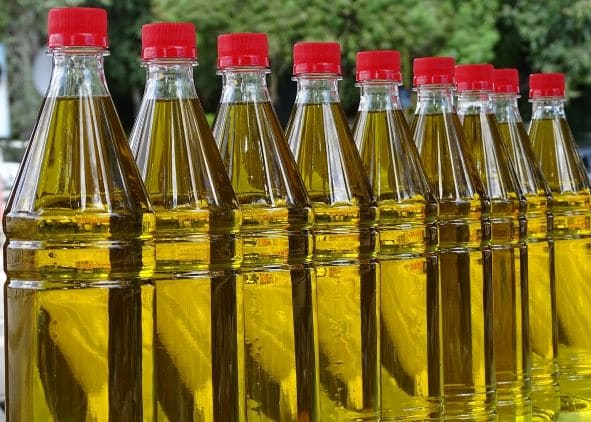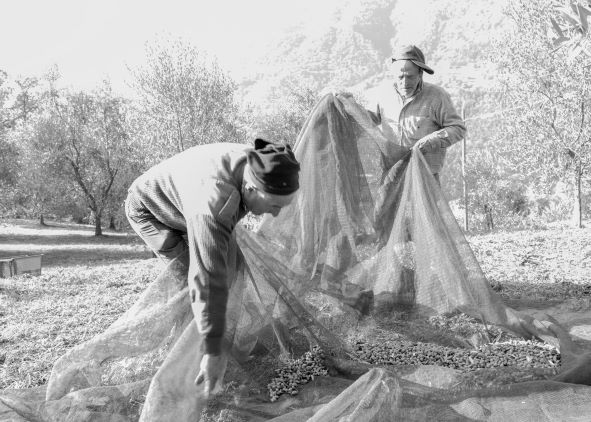
Do olive farmers receive fair wages?
For many farmers it is not worthwhile to produce good olive oil. Even at a low cost and neglecting nature,

In the tranquil groves where olives have thrived for centuries, a lesser-known challenge shadows the olive oil industry: fraud. This deceptive practice, ranging from mislabeling to diluting with inferior oils, not only misleads consumers but also tarnishes the hard work of authentic producers. At il circolo, where our commitment to pure, high-quality olive oil is paramount, we feel it’s crucial to shed light on this issue.
Fraud in the olive oil industry can take various forms. The most common include selling lower-grade oils as extra virgin, mixing olive oil with cheaper vegetable oils, and falsely claiming a specific regional origin. These deceptive practices are not just about compromising quality; they pose health risks and deceive consumers seeking the genuine benefits of true olive oil.
The repercussions of the malpractice extend beyond the misled consumer. Authentic producers, dedicated to maintaining high standards, find themselves competing against unfairly priced, inferior products. This not only affects their livelihood but also risks the reputation of regions historically renowned for their olive oil.

Thankfully, science lends a hand in identifying olive oil fraud. However, detecting olive oil fraud is a complex task that involves a variety of scientific techniques and sensory evaluations. Here are some key techniques used to detect olive oil fraud:
Regular and rigorous testing is essential to combat olive oil fraud and protect both consumers and honest producers. Additionally, regulatory bodies and certifications like PDO (Protected Designation of Origin) and PGI (Protected Geographical Indication) play a crucial role in ensuring authenticity.

Olive oil fraud isn’t a contemporary issue. It has been a persistent challenge, evolving over the centuries. Understanding its history offers valuable insights into how this problem has grown and changed, reflecting broader changes in food production and regulation, as well as the evolving methods of deception in the industry. Here are some notable instances:
These examples highlight the necessity of vigilance and strict regulations to combat olive oil fraud and protect both consumers and genuine producers. In fact, “olive oil has remained one of the most mislabeled food items on the continent, according to the European Commission’s 2022 report on food safety.” (1)
Recent scandals in the olive oil industry serve as stark reminders of the ongoing battle against fraud. These case studies not only highlight the cunning methods used by fraudsters but also emphasize the importance of vigilance and strict quality control. (2)
Knowledge is power. As consumers, being aware of how to identify genuine olive oil – from understanding labels to recognizing reputable certifications – is a vital step in avoiding fraudulent products.
The future holds promise in the fight against olive oil fraud. Emerging technologies, like blockchain for traceability and more advanced testing methods, are being developed to safeguard the authenticity of olive oil.
At il circolo, we believe in the integrity of olive oil and its deep-rooted cultural significance. By staying informed and vigilant, we can all play a part in preserving the legacy and purity of this golden elixir.
Sources

For many farmers it is not worthwhile to produce good olive oil. Even at a low cost and neglecting nature,

Every day, but especially on 26 November we honour the olive trees in our olive grove – from young to

The idea of a regenerative food system has been around for quite some time. In simple terms, it is working

il circolo V.O.F.
Tacituslaan 7
3584AP Utrecht
Netherlands
[email protected]
tel: +31 (0)6 42254141
KvK/HRB: 74704257
BTW/MwSt: NL859998502B01
5 euro discount on your next purchase?
Sign up for our newsletter with tasty recipes and interesting background stories about il circolo olive oil and receive a discount code for yourself and your friends (displayed after email confirmation).
This website uses cookies so that we can provide you with the best user experience possible. Cookie information is stored in your browser and performs functions such as recognising you when you return to our website and helping our team to understand which sections of the website you find most interesting and useful.
Strictly Necessary Cookie should be enabled at all times so that we can save your preferences for cookie settings.
If you disable this cookie, we will not be able to save your preferences. This means that every time you visit this website you will need to enable or disable cookies again.